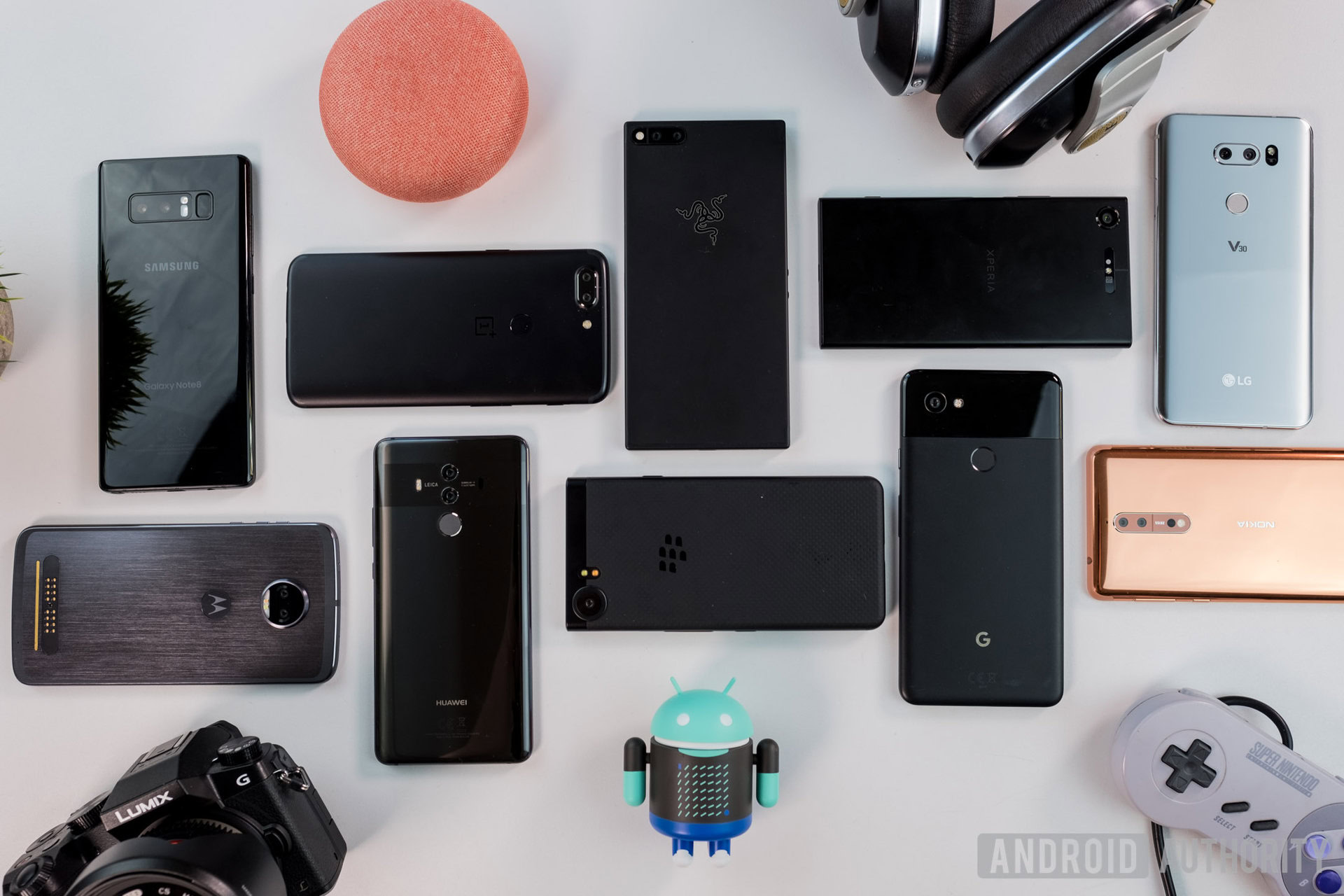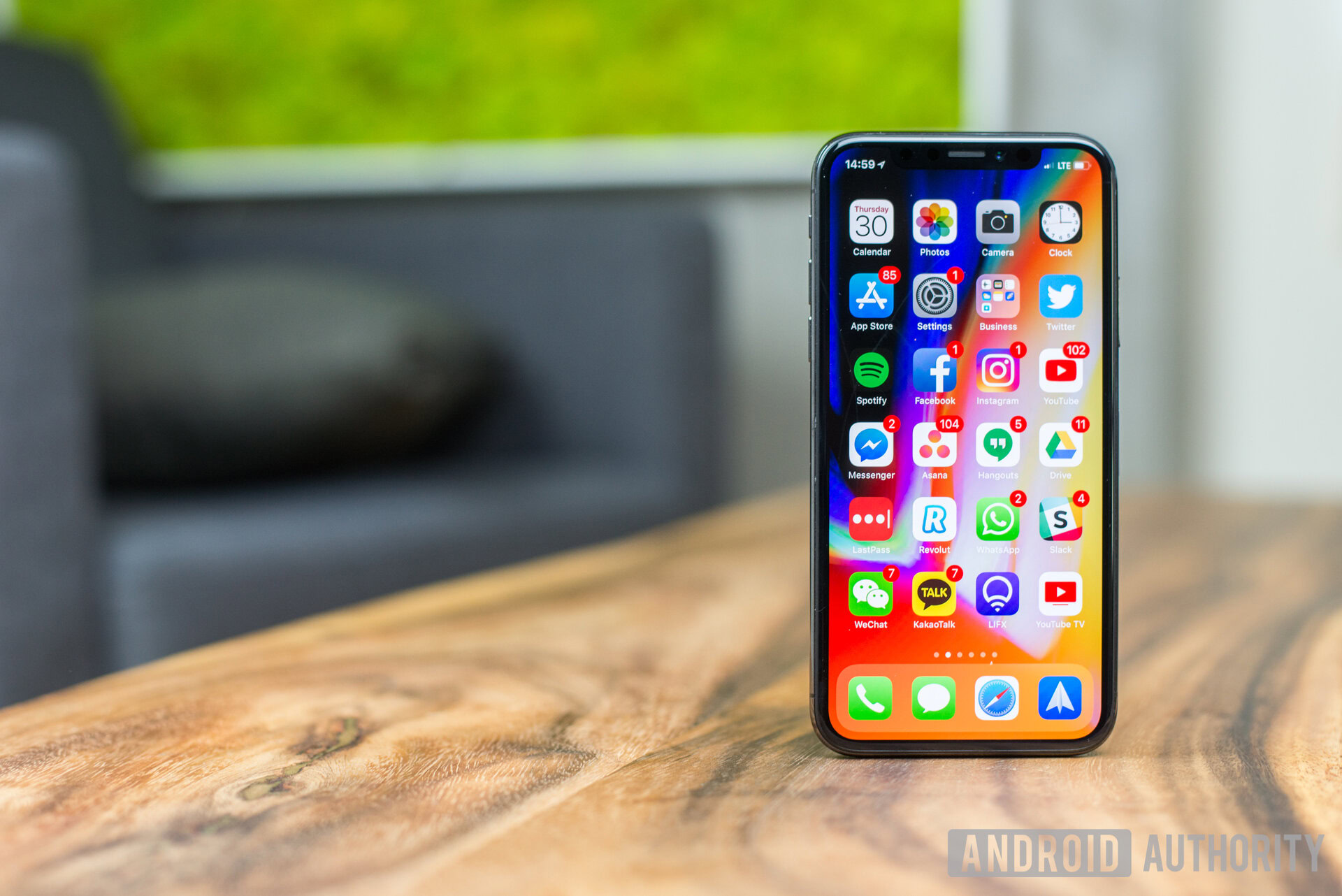Affiliate links on Android Authority may earn us a commission. Learn more.
Why 2017 was a smartphone year we'll remember

What a year it’s been. From the ten-year anniversary of the iPhone, which helped define smartphones as we know them, to Samsung bouncing back from its 2016 issues, and every OEM bringing their best; this year the smartphone industry became the most competitive it’s ever been.
We all expected smartphone brands to step up their portfolio in a big way. Android phones are often billed as iPhone-killers (though they’re usually designed more to be Samsung-killers), and this stayed true at the end of last year, as the impending launch of the iPhone X crept into every conversation. Apple was expected to bring a major shift to the iPhone towards the end of this year, and every Android brand had to bring the best they could. Most of them delivered.
The year in recap

While Android continues to dominate the smartphone market share, the elusive iPhone owner remains the target for each Android OEM, and for good reason. These consumers are some of the most loyal and most willing to spend more on a phone. To stand any chance of capturing these users during a big year for the iPhone, every brand needed to do something. In the end they all delivered something that helped them stand out.
Think Android and many immediately think Samsung Galaxy — in some markets, these terms are interchangeable — and this year, Samsung showed why it is the world’s leader in smartphones. The Galaxy S8 and S8 Plus pushed the smartphone industry towards the taller form factor and the Galaxy Note 8 proved that even an exploding flagship couldn’t stop Samsung’s juggernaut phablet line.
LG stepped up its efforts this year with both the G6 and V30, excellent devices in their own right. The same goes for HUAWEI. The P10 and P10 Plus found success, but the real star was HUAWEI’s Mate 10 Pro, which launched late in the year and won our coveted Phone of the Year award.
Those are the big ones but looking around the rest of the industry, every brand brought their best. Even companies that have traditionally struggled managed to find something to offer this year. Motorola expanded its Moto Mods device line with the Moto Z2 Force and others. Sony continued its re-emergence as a smartphone player.
HTC’s U11 Plus launched last month, and seems a flagship that could really deliver in every area. It’s yet to be widely available, but it’s got the potential to be HTC’s savior. The phone was actually meant to be the Pixel 2 XL, and could have done a lot for HTC (and Google too, for that matter). As good as the Pixel 2 XL is — and its camera is incredible — it was still one of the biggest disappointments of the year, at least for me.
This year also saw devices coming from some new players. Andy Rubin returned to smartphones with the Essential phone. It may not be perfect, but it’s getting better with regular updates. Razer bought Nextbit and swiftly released a gamer’s paradise in the Razer Phone, which offered one of the best gaming experiences on a mobile device.
Then there was Nokia, a brand acquired by HMD Global last year. The company hit the market in a big way. The Nokia 8 brought with it a partnership with ZEISS, which should bring even better smartphone cameras in 2018 as well as the somewhat unique “bothie” feature. The phone was impressive and caught us by surprise so much it only narrowly lost the chance to be crowned best bang for your buck smartphone to the OnePlus 5T. And what of OnePlus? This was a year where the company continued its excellent trajectory over the past four years, offering excellent flagships at exceptional value for money.
A bad phone? No such thing.
Looking back on this year, one thing really sticks out. Traditionally there are only a few devices that actually matter by the end of the year. This year it’s easy to argue that most, if not all, devices matter for different reasons.
Take BlackBerry. A year ago many would have said the KEYone was a failure, but it’s an overall good device with a specific target market that even had some of our team switching over. Not every brand had an excellent year, but as technology advances, even devices with flaws offer enough to be worthy contenders.
As technology advances, even devices with flaws offer enough to be worthy contenders.
Devices at a more affordable price are no different, and many even follow the latest trends. At $199, the HONOR 7X is very affordable, but it still sports dual cameras, smaller bezels and taller 18:9 aspect ratio of this year’s flagships. In previous years, the affordable flagship market has been behind the curve when it came to features. Now the gap has shrunk to a minimum.
Looming on the horizon
This year competition was more intense than ever, but what does 2018 hold? With under display fingerprint sensors not expected until the second half of the year at least, and no other likely breakthroughs expected in the hardware market, 2018 will likely be an iterative year.
We may yet see some software innovation, as AI-based assistants become further refined. Bixby may finally see a much wider global rollout, Siri will hopefully gain a much-needed overhaul, and Google Assistant will likely get more advanced in understanding you. Amazon launched its Alexa on a few mobile devices this past year. Next year it may finally go head to head with Google Assistant on more devices, just as their battle heats up in the smart home.
Whatever the future holds, I think we’ll all look back on 2017 as a definitive year. What are you most excited for next year? Let us know in the comments below!